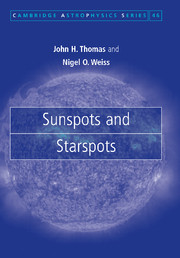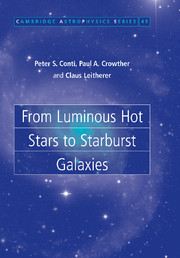Refine listing
Actions for selected content:
17000 results
6 - The stability of stars
-
- Book:
- An Introduction to the Theory of Stellar Structure and Evolution
- Print publication:
- 29 October 2009, pp 87-103
-
- Chapter
- Export citation
3 - Elementary physics of gas and radiation in stellar interiors
-
- Book:
- An Introduction to the Theory of Stellar Structure and Evolution
- Print publication:
- 29 October 2009, pp 34-50
-
- Chapter
- Export citation
Contents
-
- Book:
- An Introduction to the Theory of Stellar Structure and Evolution
- Print publication:
- 29 October 2009, pp vii-x
-
- Chapter
- Export citation
8 - Mass loss from stars
-
- Book:
- An Introduction to the Theory of Stellar Structure and Evolution
- Print publication:
- 29 October 2009, pp 130-143
-
- Chapter
- Export citation
Frontmatter
-
- Book:
- An Introduction to the Theory of Stellar Structure and Evolution
- Print publication:
- 29 October 2009, pp i-vi
-
- Chapter
- Export citation
Appendix C - Solutions to all the exercises
-
- Book:
- An Introduction to the Theory of Stellar Structure and Evolution
- Print publication:
- 29 October 2009, pp 270-299
-
- Chapter
- Export citation
1 - Observational background and basic assumptions
-
- Book:
- An Introduction to the Theory of Stellar Structure and Evolution
- Print publication:
- 29 October 2009, pp 1-14
-
- Chapter
- Export citation
Preface to the first edition
-
- Book:
- An Introduction to the Theory of Stellar Structure and Evolution
- Print publication:
- 29 October 2009, pp xiii-xv
-
- Chapter
- Export citation
10 - Exotic stars: supernovae, pulsars and black holes
-
- Book:
- An Introduction to the Theory of Stellar Structure and Evolution
- Print publication:
- 29 October 2009, pp 189-207
-
- Chapter
- Export citation
Appendix D - Physical and astronomical constants and conversion factors
-
- Book:
- An Introduction to the Theory of Stellar Structure and Evolution
- Print publication:
- 29 October 2009, pp 300-302
-
- Chapter
- Export citation
2 - The equations of stellar evolution
-
- Book:
- An Introduction to the Theory of Stellar Structure and Evolution
- Print publication:
- 29 October 2009, pp 15-33
-
- Chapter
- Export citation
Dedication
-
- Book:
- An Introduction to the Theory of Stellar Structure and Evolution
- Print publication:
- 29 October 2009, pp xvi-xvi
-
- Chapter
- Export citation
Appendix A - The equation of radiative transfer
-
- Book:
- An Introduction to the Theory of Stellar Structure and Evolution
- Print publication:
- 29 October 2009, pp 251-258
-
- Chapter
- Export citation
4 - Nuclear processes that take place in stars
-
- Book:
- An Introduction to the Theory of Stellar Structure and Evolution
- Print publication:
- 29 October 2009, pp 51-69
-
- Chapter
- Export citation
Bibliography
-
- Book:
- An Introduction to the Theory of Stellar Structure and Evolution
- Print publication:
- 29 October 2009, pp 303-307
-
- Chapter
- Export citation
9 - The evolution of stars – a detailed picture
-
- Book:
- An Introduction to the Theory of Stellar Structure and Evolution
- Print publication:
- 29 October 2009, pp 144-188
-
- Chapter
- Export citation
5 - Equilibrium stellar configurations – simple models
-
- Book:
- An Introduction to the Theory of Stellar Structure and Evolution
- Print publication:
- 29 October 2009, pp 70-86
-
- Chapter
- Export citation
Index
-
- Book:
- An Introduction to the Theory of Stellar Structure and Evolution
- Print publication:
- 29 October 2009, pp 308-314
-
- Chapter
- Export citation

Sunspots and Starspots
-
- Published online:
- 28 October 2009
- Print publication:
- 23 October 2008

From Luminous Hot Stars to Starburst Galaxies
-
- Published online:
- 28 October 2009
- Print publication:
- 23 October 2008
